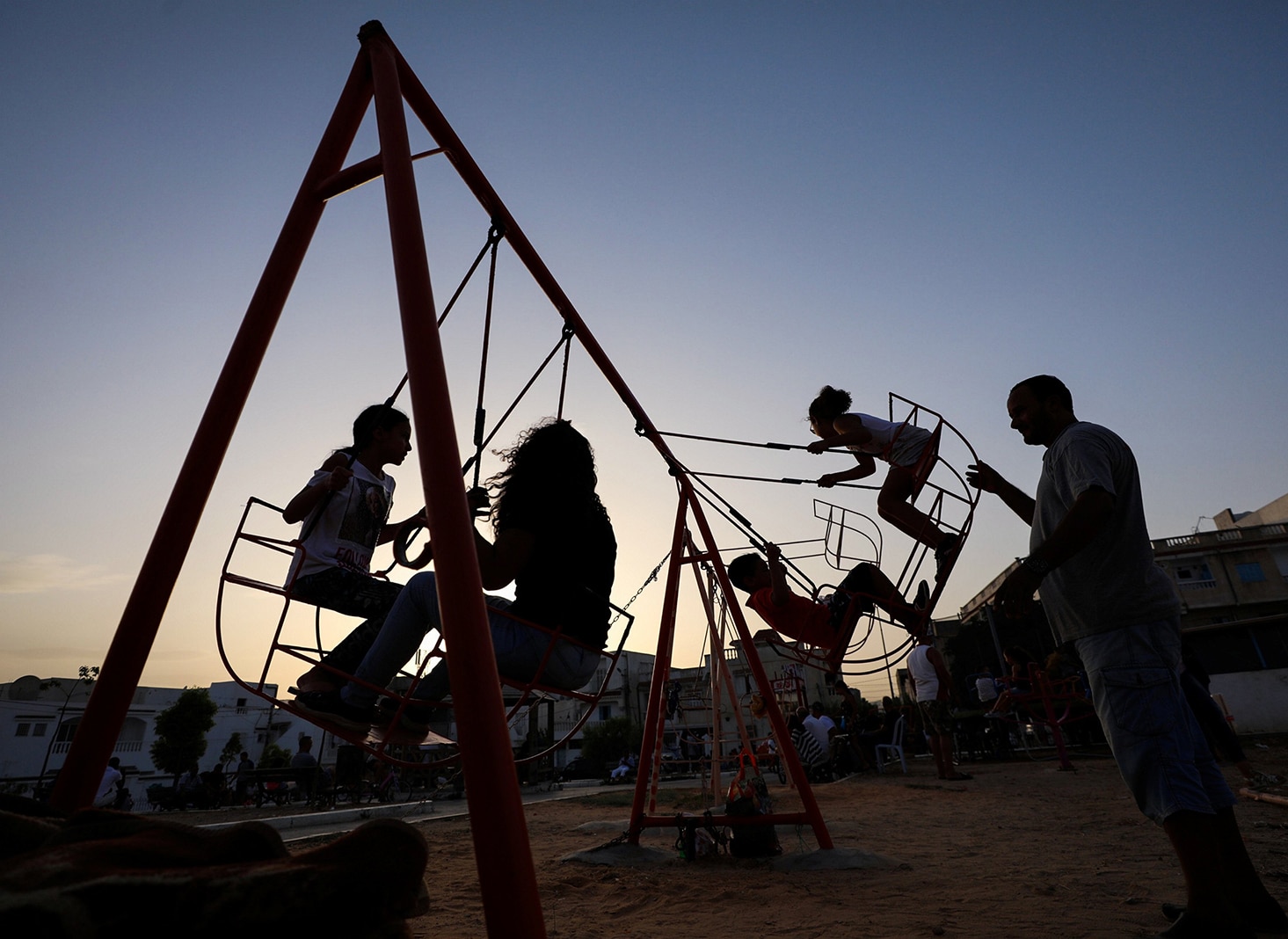(OSV News) — For plummeting worldwide fertility rates to change course, people must find courage to “do the hard thing” of raising large families, and that courage comes from faith, said Catherine Ruth Pakaluk, an economist at The Catholic University of America in Washington.
“We live in a society that it’s just so easy not to have children,” said Pakaluk, author of “Hannah’s Children: The Women Quietly Defying the Birth Dearth,” published March 19 by Regnery Gateway. Her research — based on open conversations with college-educated women who have five or more children — indicates that religious faith is a major motivator for having children. She said this shows an importance to change people’s hearts about the value of children — something Christians have historically done as they converted pagan cultures.
Pakaluk’s book coincides with a recently published report by the Institute for Health Metrics and Evaluation at the University of Washington in Seattle showing nearly all countries worldwide will fall below replacement fertility levels within the next 75 years.
By 2100, the fertility rate in 97% of countries is forecasted at below replacement levels, with more 155 of 204 countries and territories (76%) projected to hit that mark by 2050. Fertility rates in the United States have generally been below replacement level since about 1971.
The total fertility rate — a population’s average number of children born to a woman over a lifetime — has fallen globally from 4.84 in 1950 to 2.23 in 2021. About 54% of countries are already below 2.1, the generally accepted replacement level, with no projected rebound, according to the IHME report.

Weakening economies and innovation
The Lancet, a science journal that published the IHME report March 20, said the data “warn that national governments must plan for emerging threats to economies, food security, health, the environment, and geopolitical security brought on by these demographic changes that are set to transform the way we live.”
The IHME report was based on data from the institute’s Global Burden of Diseases, Injuries and Risk Factors Study 2021, which is described as “the single largest and most detailed scientific effort ever conducted to quantify levels and trends in health” with thousands of collaborating researchers worldwide. The research was funded by the Bill & Melinda Gates Foundation.
It confirms previously identified trends but with greater precision, based on “innovative, more accurate forecasting methods grounded in real-world evidence,” according to the IHME. The United Nations Population Fund, for example, titled its 2023 report “The Problem With ‘Too Few,'” noting that populations continue to rise in all regions of the world with the exception of Europe. However, populations in Central, South and Southeast Asia; Latin America and the Caribbean; and North America are projected to reach their “peak sizes” by 2100.
Economists warn that falling fertility rates are expected to weaken national economies and innovation, push people to stay in the workforce longer, foster fierce competition for immigration and thin family networks, resulting in widespread isolation and loneliness.
The United States currently has a total fertility rate around 1.64. It is projected to decrease to 1.52 by 2050 and 1.45 in 2100. In 1950, the U.S. rate was 3.08.
By 2050, South Korea, Puerto Rico and Taiwan are projected to have the world’s lowest fertility rates, all under 1%; Bhutan, Maldives and Puerto Rico are projected to have the world’s lowest rates in 2100.
Meanwhile, the total fertility rates in “low-income regions” such as sub-Saharan Africa are expected to continue to fall, with many dipping below replacement rate, but still remain higher than the global average. By 2100, the share of the world’s births are predicted to double in low-income regions from 18% in 2021 to 35%. Forecasts for 2100 see half of the world’s children being born in sub-Saharan Africa.
“We are facing staggering social change through the 21st century,” said the IHME’s Stein Emil Vollset, the report’s senior author, in a media statement. “The world will be simultaneously tackling a ‘baby boom’ in some countries and a ‘baby bust’ in the others. As most of the world contends with the serious challenges to the economic growth of a shrinking workforce and how to care for and pay for aging populations, many of the most resource-limited countries in sub-Saharan Africa will be grappling with how to support the youngest, fastest-growing population on the planet in some of the most politically and economically unstable, heat-stressed, and health system-strained places on earth.”
Reversing the trends
A 2023 story in the Economist said the fertility rate’s trajectory may lead to the first time the world’s population (currently around 8.1 billion) has declined since the Black Death, the 14th-century plague that killed 30% to 50% of Europe’s population.
While some positive trends may be associated with lowering birth rates, such as an increase in women’s education or lower impact on human land use, “overall the effects will be very challenging to deal with,” said economist Lyman Stone, a research fellow at the Virginia-based Institute for Family Studies and chief information officer of the population research firm Demographic Intelligence.
Data show public policy changes alone are unlikely to reverse the direction of what has been termed a looming fertility “collapse,” but they may help couples who want to have several children achieve it, Stone said. In the United States, studies indicate a growing gap between the at least two children most women say they want, and the fewer than two children they actually have, he said.
“This isn’t a product of a long-span expansion in human freedom,” he said. “The reality is that in almost every country around the world, people continue to say that they want two or more children. So if we’re headed to a society, a world where everybody’s having 1.6 (children) on average, which is what they forecast for the long run, that’s a society where globally a huge share of people are not having families they want to have.”
Meanwhile, people with a “more pessimistic” outlook express lower fertility desires than those who are more optimistic, and they are less likely to have fewer children than they said they wanted, Stone said.
“So, negative outlook on life is definitely one factor shaping falling fertility and undershooting fertility desires,” he said. “There’s also some evidence — although it’s more limited — that undershooting fertility desires is associated with less happiness in life. … People tend to be happiest when they get what they want.”
The role of Christians
Pope Francis has repeatedly expressed concern about declining fertility rates, including at an annual conference in May 2023 addressing Italy’s declining birth rate, in which he connected low rates with lack of hope.
“The birth of children, in fact, is the main indicator for measuring the hope of a people,” Pope Francis said. “If few are born it means there is little hope. And this not only has repercussions from an economic and social point of view but also undermines confidence in the future.”
“A change in mentality is needed; the family is not part of the problem, but part of its solution,” the pope added.
The director of social research and associate professor at CUA’s Busch School of Business, Pakaluk said that it is easy for Christians to take for granted the cultural value of children, but the historical practices of exposure and child sacrifice, and current cultural attitudes supporting abortion, contradict that narrative. To counter that view, she encourages people of faith to speak about the value of their children, “reclaiming a sense of truth about the child.”
“I don’t think that birth rates will recover anywhere without this. It’s really pivotal,” said Pakaluk, a Catholic with eight children and six stepchildren.
Christians are “actually holding the thing that can most move the needle, but it requires us to have the creativity to see past the normal levers of cultural power,” she said. “I think about it as a kind of gospel of life.”





